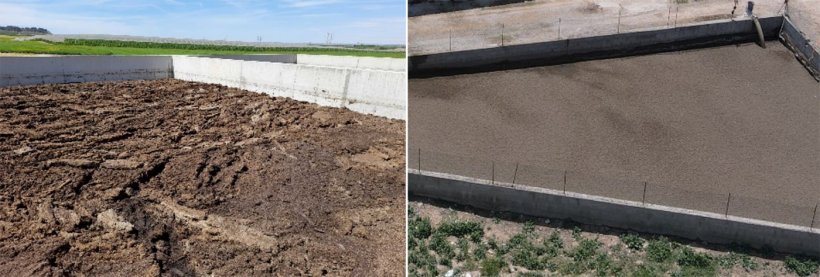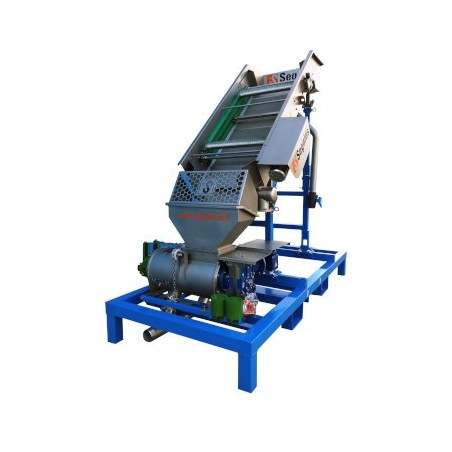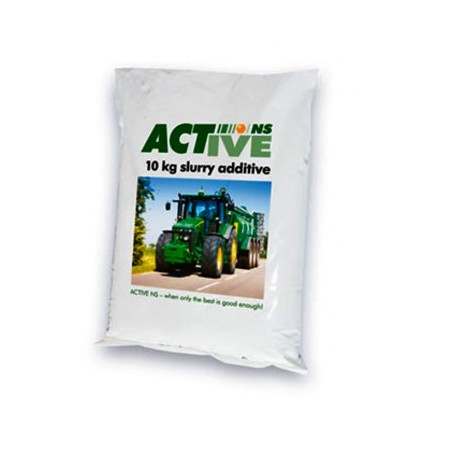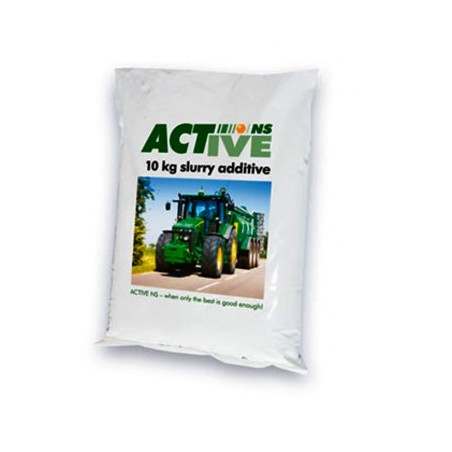In Spain, aligning farms with the new regulatory framework (Royal Decree 306/2020) involves adapting new slurry management techniques, including making modifications to management and even revising the structural conditions for new barns and external storage systems. Applying the best available techniques (BATs, the techniques tested on a commercial farm scale that have proven to be technically and economically feasible and at the same time provide environmental protection) to optimize slurry management inside the barns for existing farms means increasing the frequency of emptying the pits to the outside storage, which must be done at least once a month. Increasing the frequency of emptying to the lagoons implies adapting the storage autonomy beyond three months, in order to adapt the slurry management to the ideal times for its application as a fertilizer in the agricultural setting.
For existing farms at the date of publication of RD 306/2020, there are two different scenarios: they may only need to adapt the storage systems with emission reduction techniques; or they may have to build new systems to increase their storage autonomy, which should be built in such a way as to generate the minimum ammonia emissions compared to the emissions produced during storage in a lagoon without a cover and without natural crust formation, a technique that has been considered the reference for the calculation of the reduction efficiencies. For new farms, the design and construction of the facilities, both those that will house the animals and those that will store the slurry, should consider techniques that allow high emission reduction efficiencies.

The following table lists the techniques defined as BAT for storage lagoons or tanks and their applicability depending on whether they are intended for the adaptation of existing systems or for new constructions.
| BAT | Environmental effectiveness - Reduction of ammonia emissions in storage (%) vs. reference technique | Applicable in existing lagoons/tanks | Applicable in new lagoons/tanks |
|---|---|---|---|
| Covering with floating materials (natural crust, straw, peat, bark, etc.) | 40% | X | |
| Acidification (pH=6) | 50% | X | |
| Replacement of lagoons with elevated tanks (>3 m high). | 30-60%* | X | |
|
Cover with expanded clay balls (Lightweight expanded clay aggregate/LECA) or Pearlite and Zeolite. |
60% | X | |
| Covers with geometric pieces (hexagons, balls, etc.) | 60% | X | |
| Floating plastic covers | 60% | X | |
| Flexible covers | 80% | X | X |
| Rigid covers (concrete, fiberglass panels, etc.) | 80% | X | X |
| Slurry bags | 100% | X | X |
*Framework Code for Good Agricultural Practice for Reducing Ammonia Emissions, UNECE 2015.
- Natual crust is formed in lagoons where the slurry has a high dry matter content, but at the same time, in order for this crust to be permanent the slurry filling and emptying must be done from the bottom part of the lagoon or tank so as not to cause breakage that would prevent it from forming again quickly. When the consistency of the slurry does not allow the formation of the natural crust, it can be substituted by other light, floating materials such as straw, peat, etc. With these types of coverings, the agitation of the slurry for homogenization prior to application can cause crust breakage or undesired sedimentation of the material towards the bottom part of the lagoon/tank, blocking the outlets for loading.
- With the cover made of expanded clay balls (LECA), the quantity to be applied should be at least 10-12 cm thick and should cover the entire free surface of the slurry. The agitation will also be done below the cover so that it does not sink the material allowing it to return to its initial state after agitation. The economic cost is around 90-120 €/m3.

Figure 1. 40-60% reduction efficiency of NH3 emissions with floating materials: in the photo on the left, compact natural crust with filling and emptying under crust and in the photo on the right, LECA. (Image provided by Arvet).
- Floating geometric pieces applied over the entire surface of the lagoon will naturally join together once applied. In lagoons where natural crust may form, it may interfere with the joining of the pieces. If the storage level of the lagoon is very close to the top, adverse weather conditions with strong winds could displace the floating parts out of the lagoon. It is recommended to leave a safety filling margin of at least 50 cm in the tank/lagoon. During agitation for homogenization, they also tend to pile up at the point of turbulence but tend to regain their initial position after agitation. The economic cost is currently between 18-24 €/m2.

Figure 2. NH3 emission reduction efficiency of 60% with floating geometric pieces: in the photo on the left, HEXA-COVER hexagons (image provided by DPLAN) and PANAL FLOTANTE water-filled balls in the photo on the right.
- Another validated technique for emission reduction is acidification, which reduces the basic pH of the slurry, which together with the temperature is responsible for the increase in emissions (pH around 8). This double-effect technique prevents the loss of N in the form of ammonia, which allows the ammonium to be retained in a soluble form in the slurry and helps to increase its agronomic value for its subsequent use as fertilizer. For the technique to be effective the pH must reach a value below 6, so it will be necessary to periodically re-acidify all the slurry in storage, as the input of slurry from the unacidified pit will be continuous. Continuous acidification systems in small tanks with homogenization and slow dosing can help to prevent the formation of foams during the process. Acidifying the slurry under the pit in a continuous way will also reduce the doses to be applied in the lagoon since we would start with a slurry with a lower pH (around 6-7), with which the buffer effect would be lower. The cost of acidification will depend on the market price of 98% sulfuric acid or diluted to 30-40% in order to reduce the risk in its handling. The installation for continuous acidification would be an added investment.
- Finally, the most efficient techniques are rigid or flexible cover structures that cover the entire surface of the lagoon/tank. These covers can increase the anaerobic degradation of the slurry that is stored for long periods and cause a higher methane generation, so they must be equipped with a gas exhaust system featuring a small orifice or gas outlet valves to manage potential overpressure. Alternatively, they can channel all emissions to a designated point for biogas extraction and harness its energy potential. The cost will depend on the structure with which the lagoon is covered, as well as the surface to be covered.

Figure 3. 80% reduction efficiency of NH3 emissions with flexible tent-type covers (left) or flexible covers with polypropylene film or the like (right).
With large lagoons, this technique may not be economically viable, so in order to achieve 80% reductions, we will have to evaluate whether the simultaneous application of two or more techniques with lower efficiency in reducing emissions can be equally effective. In spite of the different tank cover systems, farms that have to implement new external storage devices must take into account that the application of BAT requires a rethinking of the design. The new construction requirements are based on:
- Reduction of the ratio between the emission surface and the volume of slurry (increase height and reduce the surface ratio). New tanks should respect height:surface area ratios of 1:30-50 in rectangular systems or height:diameter ratios of 1:3 to 1:4 in circular systems.
- Reducing wind speed and air exchange over the surface. Increase the free margin (distance between the slurry surface and the upper edge of the tank). It is important to take this point into account when sizing the lagoon/tank.
- Reducing slurry agitation by filling and emptying the slurry as close to the base of the tank as possible and always below the effective slurry surface, as well as avoiding slurry homogenization when it is not necessary.
- Covering the tanks with flexible or rigid covers that guarantee an 80% efficiency in ammonia reduction. The flexible cover system sealed on the sides of the lagoon can divert to a rural digester with which the methane generated by the digestion of the slurry in the psychrophilic range (at ambient temperature conditions) can be used either as a small thermal source or to reduce its polluting effect by burning it in a safety flare.
- In addition, the tank/lagoon must be built with materials that guarantee watertightness and impermeability, and its integrity must be checked by means of leak detection systems and periodic visual inspections in order to prevent any leaks into the soil and water.







